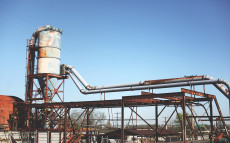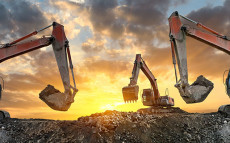- pathfindersAI
- Job Profile
Structural Iron and Steel Workers
Summary
Structural Iron and Steel Workers: Building the Framework of Society
What They Do
Structural Iron and Steel Workers play a pivotal role in constructing the skeletal system of buildings, bridges, and other large-scale structures. These professionals are the backbone of the construction industry, tasked with erecting the framework that supports the entire edifice. Working with iron and steel materials, they ensure that structures are safe, stable, and capable of withstanding environmental stresses. From skyscrapers to large residential complexes, their craftsmanship is integral to modern architecture and urban development.
Job Responsibilities
Structural Iron and Steel Workers face a dynamic array of responsibilities each day. They read and interpret blueprints and engineering drawings to understand the precise specifications of a project. Using these detailed plans, they then cut, position, and bolt together steel components. Aligning and welding steel beams and columns to ensure structural integrity is another critical task. Safety is paramount in their job; hence, they must adhere strictly to safety protocols and guidelines to prevent accidents. Additionally, they often collaborate with other tradespeople, such as welders and crane operators, to achieve seamless integration of materials.
Essential Skills
To succeed as a Structural Iron and Steel Worker, several essential skills are mandatory. Physical strength and stamina are fundamental, as the job demands prolonged periods of heavy lifting and strenuous activity. Strong technical skills in reading blueprints and understanding structural designs are crucial for accurate execution. A keen eye for detail helps in making precise cuts and ensuring the alignment of steel components. Proficiency in using various tools and machinery, such as welding equipment, torches, and cranes, is also necessary. Furthermore, good teamwork and communication skills enable effective collaboration on complex projects.
Educational Pathways
The journey to becoming a proficient Structural Iron and Steel Worker usually begins with a high school diploma or GED, followed by hands-on training through an apprenticeship. Apprenticeships, which typically last three to four years, provide a blend of classroom instruction and on-the-job experience. During this time, trainees learn about safety regulations, welding techniques, and blueprint reading. Formal education in subjects like mathematics and mechanical drawing can also be advantageous. Some opt to pursue further training through technical schools or community colleges, which offer more in-depth courses and may provide certifications that enhance employment prospects.
Career Prospects
The outlook for Structural Iron and Steel Workers remains robust, driven by ongoing urbanization and the steady demand for new construction. Infrastructure projects such as bridges, highways, and airports, combined with private sector investments in real estate, provide ample employment opportunities. According to labor statistics, there is an expected growth in jobs within this field, indicating a stable and promising career path. With experience, workers can advance to supervisory roles, project management, or even open their own contracting businesses. Some may choose to specialize in niche areas, such as ornamental ironwork or industrial steel construction, further diversifying their career prospects.
Conclusion
Structural Iron and Steel Workers are indispensable artisans who shape the skyline of our cities and towns. Their expertise in assembling the steel frameworks that form the backbone of major structures ensures that these buildings stand the test of time. Through a combination of physical prowess, technical skill, and meticulous craftsmanship, they contribute significantly to the construction industry. Aspiring Structural Iron and Steel Workers should consider the blend of education and hands-on apprenticeship to embark on this rewarding career path. With solid job prospects and opportunities for growth, this profession offers a fulfilling and impactful career for those up to the challenge.
Video
Compensation
| State | Median Salary | Median Hourly | Positions |
|---|---|---|---|
| AL | 57,940 | 27.85 | 880 |
| AK | 73,770 | 35.47 | 130 |
| AZ | 57,560 | 27.67 | 2,500 |
| AR | 48,740 | 23.44 | 590 |
| CA | 76,760 | 36.90 | 7,730 |
| CO | 61,200 | 29.42 | 940 |
| CT | 75,800 | 36.44 | 240 |
| DE | 59,140 | 28.43 | 110 |
| DC | 62,330 | 29.97 | 320 |
| FL | 49,690 | 23.89 | 2,350 |
| GA | 56,390 | 27.11 | 840 |
| HI | 94,490 | 45.43 | 80 |
| ID | 52,970 | 25.47 | 240 |
| IL | 98,170 | 47.20 | 3,180 |
| IN | 65,560 | 31.52 | 2,290 |
| IA | 72,470 | 34.84 | 790 |
| KS | 47,110 | 22.65 | 480 |
| KY | 62,680 | 30.13 | 1,120 |
| LA | 64,250 | 30.89 | 1,360 |
| ME | 63,280 | 30.43 | 180 |
| MD | 65,560 | 31.52 | 1,240 |
| MI | 66,910 | 32.17 | 1,840 |
| MN | 75,800 | 36.44 | 520 |
| MS | 46,710 | 22.46 | 320 |
| MO | 60,540 | 29.11 | 1,040 |
| MT | 62,560 | 30.08 | 230 |
| NE | 62,660 | 30.12 | 920 |
| NV | 46,110 | 22.17 | 730 |
| NH | 55,790 | 26.82 | 260 |
| NJ | 104,750 | 50.36 | 920 |
| NM | 74,580 | 35.85 | 30 |
| NY | 93,210 | 44.81 | 3,480 |
| NC | 51,330 | 24.68 | 1,380 |
| ND | 61,100 | 29.38 | 270 |
| OH | 72,740 | 34.97 | 2,860 |
| OK | 45,790 | 22.01 | 880 |
| OR | 86,740 | 41.70 | 460 |
| PA | 76,490 | 36.77 | 1,650 |
| RI | 77,600 | 37.31 | 180 |
| SC | 54,180 | 26.05 | 480 |
| SD | 49,070 | 23.59 | 820 |
| TN | 51,220 | 24.63 | 1,640 |
| TX | 48,600 | 23.36 | 8,400 |
| UT | 52,240 | 25.11 | 900 |
| VT | 52,560 | 25.27 | 50 |
| VA | 51,380 | 24.70 | 920 |
| WA | 98,550 | 47.38 | 1,500 |
| WV | 59,330 | 28.53 | 110 |
| WI | 84,980 | 40.86 | 610 |
| WY | 46,890 | 22.55 | 80 |
Similar Occupations
In this area you will find other occupations that are close to the one you were viewing in tasks, knowledge and work environment. If the primary job profile you are viewing isn't quite to your liking, take a look around and see what else is available.
Basic and Premium Accounts have more alternative occupations available than the Free account.

Aircraft Structure, Surfaces, Rigging, and Systems Assemblers - 51-2011.00
Aircraft Structure, Surfaces, Rigging, and Systems Assemblers are responsible for constructing, assembling, and installing the mechanical components and systems of aircraft according to blueprints, specifications, and quality standards. They ensure the structural integrity and functionality of the aircraft through precise assembly of surfaces, rigging, and integrated systems, including electrical and hydraulic components.
-
$61,240/yr
Median Pay -
29,810
Number of Jobs

Boilermakers - 47-2011.00
Boilermakers are skilled tradespeople who construct, assemble, maintain, and repair large containers that hold gases or liquids, such as boilers, tanks, and vats. They work with heavy-duty tools and equipment, often in industrial settings, to ensure these structures operate safely and efficiently.
-
$71,140/yr
Median Pay -
11,130
Number of Jobs